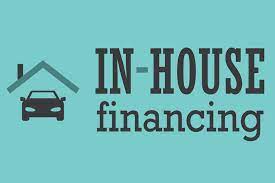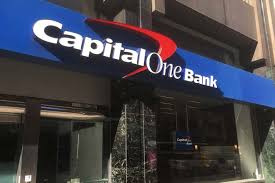In recent years, the automotive market has experienced a notable shift with the emergence of in-house financing for car lots. This trend reflects a growing demand for more accessible financing options among car buyers. Traditional dealership financing often puts a strain on consumers, who may struggle with strict credit requirements. However, in-house financing car lots have started to provide alternative solutions by offering tailored payment plans directly through their operations. This change not only simplifies the financing process but also creates a more personal buying experience. As more consumers seek out convenient and flexible vehicle financing, the appeal of these dedicated car lots continues to rise.
Understanding in-house financing: A shift in automotive sales strategy
In recent years, the automotive industry has witnessed a significant transformation in sales strategies, one of which is in-house financing. This term may sound complex, but it’s essentially a method where the dealership offers financing directly to the customer rather than relying on third-party banks or financial institutions. By doing this, dealerships aim to streamline the purchasing process, making it easier and often more appealing to buyers.
What does in-house financing mean for buyers?
For many potential car buyers, in-house financing presents several intriguing advantages. Here are a few key points to consider:
- Convenience: By managing their car purchase and financing in one location, customers can spend less time in the dealership.
- Flexibility: Dealerships may offer more flexible terms tailored to individual needs, which isn’t always possible with traditional banks.
- Potential for Better Deals: With in-house financing, some customers may find themselves eligible for offers that aren’t available through external lenders.
However, it’s not all sunshine and rainbows. There are some potential pitfalls that buyers should keep in mind. For instance, dealerships with different financial expertise may make different offers that aren’t in the customer’s best interest. Understanding your credit situation before diving in is crucial. If you have good credit that you could leverage for better rates elsewhere, a dealership might not always be the best option.

Why are dealerships shifting to in-house financing?
Now, one might wonder why automotive dealerships are increasingly adopting this financing method. It’s not simply about making life easier for buyers; there are also compelling reasons from the dealer’s perspective:
- Higher Profit Margins: By offering their financing, dealers can potentially earn more money, as they may charge higher interest rates compared to banks.
- Increased Customer Loyalty: When customers finance their cars through the dealership, they often feel a stronger connection to the brand, leading to repeat business.
- Control Over the Financing Process: Dealerships can customize financial packages to meet market demands, offering promotions or incentives that can attract potential buyers.
Interestingly, this approach has caused some confusion among consumers. Many buyers might not fully grasp the implications of in-house financing, often leading to misunderstandings about interest rates and repayment terms. The reality is, that while a dealer might advertise a low monthly payment, it’s essential to look at the total cost over time, as hidden fees may arise. Thus, being an informed customer can make a world of difference.
Conclusion
In-house financing is reshaping automotive sales in nuanced ways. For buyers, it offers benefits and challenges that require thorough consideration. Dealerships use this strategy to boost sales, but consumers must understand the implications. To sum it all up, whether you view in-house financing as a boon or a bane likely hinges on your financial knowledge and market awareness. The key is to stay informed, ask the right questions, and not rush into decisions that you may regret later.

The advantages of in-house financing for consumers and dealerships are significant.
In-house financing is becoming an increasingly popular option for both consumers and dealerships. It’s essential to understand the advantages that come with this financing option, especially in the context of a rapidly changing economic landscape. As we delve deeper, we will uncover how in-house financing works and why it might just be the key to satisfying everyone involved in the car-buying process.
Enhanced Accessibility for Consumers
One of the primary benefits of in-house financing is that it often provides enhanced accessibility for consumers. Many individuals face hurdles when trying to secure loans from traditional banks. Complex requirements and lengthy approval processes can be daunting. However, dealerships that offer in-house financing tend to have more flexible criteria. This means that those with less-than-perfect credit scores may still qualify. Consumers often appreciate the streamlined process, as it saves both time and stress.
Dealerships’ profit margins have improved.
In-house financing can significantly boost profit margins from the dealership’s point of view. When a dealership finances a vehicle directly, it creates a substantial revenue stream. This allows them to set their interest rates and terms, which can lead to better overall returns compared to relying solely on third-party lenders. As a result, dealerships can enhance their profitability while also providing their customers with appealing financing options.
Strengthened customer relationships
Let’s not overlook the importance of relationships in this industry. In-house financing fosters stronger connections between consumers and dealerships. When a customer feels supported throughout the financing process, they are more likely to return for future purchases. This kind of trust can cultivate loyalty, which is invaluable in a competitive market. Dealerships can offer personalized services, and the overall experience tends to feel more humanized compared to the often impersonal nature of banks.
| Advantages | Consumers | Dealerships |
|---|---|---|
| Accessibility | Easier approval processes | Customers can have flexible terms. |
| Profitability | The potential for better rates | Higher profit margins |
| Customer Relationships | Personalized financing experiences | Increased customer loyalty |
In conclusion, in-house financing serves as a win-win situation, benefiting both consumers and dealerships alike. It addresses the common challenges faced by consumers while allowing dealerships to enhance their profitability and strengthen customer relationships. As the market progresses, it’s evident that in-house financing could become increasingly crucial in the process of car purchases. Understanding these dynamics as a consumer or dealer will be critical in navigating the automotive landscape of the future.
How In-house financing is changing the Car Buying Experience
In today’s fast-paced world, options often seem overwhelming. However, the rise of in-house financing has started to reshape the car-buying journey intriguingly. This financial model, in which the dealership provides financing directly to the buyer, is changing everything from negotiation tactics to consumer expectations.
The convenience factor
Let’s face it: purchasing a car can be a daunting task. The endless options, extensive paperwork, and sometimes confusing financing terms can leave anyone feeling perplexed. In-house financing simplifies this process significantly. Dealerships remove a layer of complexity by offering direct financing at the point of sale. Buyers can focus more on selecting the right vehicle than worrying about securing a loan from a bank or credit union. It’s a streamlined experience that many are beginning to prefer.
Building Relationships
In-house financing fosters a unique relationship between the dealer and the buyer. This connection can lead to better, more personalized service. When a dealership is also your lender, their interest aligns closely with your satisfaction. They want you to be happy with your purchase, not just today but for years to come. In this sense, the experience feels less transactional and more relational. However, this can also lead to some confusion. Buyers may wonder whether they’re getting the best deal possible or if they’re simply being encouraged to take a certain route. The level of transparency in terms of rates and repayment options often varies from one dealership to another, creating a landscape that’s not always easy to navigate.
Flexibility vs. Risks
Of course, like any financial decision, there are pros and cons to consider. In-house financing often offers more flexible repayment options, which can be a blessing for many. A dealership might be willing to work with you on monthly payments or down payment amounts that a traditional lender wouldn’t budge on. However, this flexibility doesn’t come without potential downsides. Buyers may inadvertently end up with higher interest rates than expected. Thus, it’s crucial to ask questions and carefully compare options, including rates and terms.
In conclusion, while in-house financing brings a refreshing change to the car-buying experience, it’s essential to navigate it wisely. The blend of convenience, relationship building, and flexibility creates an appealing alternative to traditional financing. Nevertheless, being aware of potential pitfalls is key to making an informed decision. So, the next time you find yourself at a dealership, consider diving deeper into their financing options. You might just find that purchasing a car can be a lot more enjoyable than you ever thought possible.
The role of credit scores in in-house financing decisions is an important consideration.
In today’s financial landscape, understanding credit scores has become increasingly essential, especially when it comes to in-house financing decisions. Many people find themselves perplexed by how these scores influence their borrowing capabilities and the terms they may receive. Therefore, let’s break down the intricacies of credit scores and their impact on financing options, ensuring you have a clearer understanding of the subject.
What is a credit score?
A credit score is a numerical representation of an individual’s creditworthiness. It ranges from 300 to 850. Generally, a higher score signifies better credit management. Yet, what contributes to a credit score? Here are the main factors:
- Payment history: This accounts for around 35% of your score. Consistently paying bills on time reflects well on your credit evaluation.
- Credit Utilization: This refers to how much of your available credit you are currently using. A lower percentage suggests responsible use of credit.
- Length of Credit History: A longer credit history usually benefits your score, as it demonstrates your experience with managing credit over time.
- Types of Credit: Having a mix of credit types, such as credit cards, installment loans, and retail accounts, can enhance your score.
- Recent Inquiries: When you apply for new credit, you receive a hard inquiry, which can temporarily lower your score.
The relationship between credit scores and in-house financing is significant.
When considering in-house financing, companies often rely on credit scores to assess potential borrowers. Thus, understanding this connection becomes crucial. Companies usually establish specific criteria based on credit scores to decide who qualifies for financing options. Now, why is this significant?
First and foremost, a higher credit score typically leads to more favorable financing terms. In essence, someone with an excellent credit score may receive lower interest rates and higher loan amounts. Conversely, a lower credit score may invite higher interest rates or even outright denial of financing options.
However, several companies also engage in flexibility. Some might offer financing to individuals with lower scores, but the terms may involve significant constraints. Therefore, it’s vital to weigh the pros and cons when navigating these options.
Navigating Your Financial Options
So how can individuals improve their credit scores to enhance their chances of favorable in-house financing? Here are a few strategies:
- Pay Bills Promptly: Always strive to pay your bills on time, as this has a substantial impact on your score.
- Reduce Debt: To improve your credit utilization ratio, work on paying down existing debts.
- Monitor Your Credit Report: Be vigilant for any inaccuracies or fraudulent activity that may adversely affect your credit score.
- Limit New Credit Applications: Be cautious about applying for new credit cards or loans, as multiple inquiries can hurt your score.
Ultimately, your credit score plays a pivotal role in shaping your in-house financing options. By educating yourself and taking proactive steps, you can better navigate the complexities of credit and secure financing that supports your goals.
In conclusion, while the world of credit scores can be downright confusing, it’s essential to remember that with the right knowledge and approach, you can unlock better financing possibilities. So equip yourself with information and take action. Your financial future is worth it!
Comparative Analysis: In-House Financing vs. Traditional Auto Loans
When it comes to acquiring a vehicle, the decision between in-house financing and traditional auto loans requires careful consideration. Many people assume that one option is better than the other, but the reality can be quite complex. Each method has pros and cons, and what works for one person may not work for another.
Understanding in-house financing
In-house financing, often offered directly by the dealership, allows buyers to secure a loan without going through a bank or credit union. This can be appealing to those who may not have the best credit scores. However, the terms can vary significantly between dealerships. Some may offer lower interest rates, while others might not be as competitive. This variability can make things a bit tricky for the buyer.
One major benefit of in-house financing is simplicity. Buyers can often complete all the necessary paperwork in one place. This convenience can save you a lot of time, particularly for those who prefer a streamlined experience. Furthermore, dealerships may provide promotional rates that are more attractive than standard bank loans.
Breaking Down Traditional Auto Loans
On the other hand, traditional auto loans come from banks, credit unions, or online lenders. These lenders tend to provide a clearer picture of the interest rates and terms, which can lead to better-informed decisions. However, they may have stricter requirements, which can be daunting for some. If you have a stellar credit score, it’s often easier to find favorable rates with traditional loans.
While traditional loans might seem complicated at first glance, they do offer the advantage of competitive loan structures. Many lenders provide specialized services, such as flexible repayment terms and the ability to refinance if needed. This can make them particularly appealing, especially if you value having options.
A Balancing Act: Factors to Consider
When weighing these two options, a variety of factors come into play. For starters, consider your credit score; it plays a significant role in determining your financing options. Next, think about how much you’re willing to pay upfront. In-house financing may require a smaller down payment, but you might end up paying more in the long run due to higher interest rates.
Moreover, try to determine how long you plan on keeping the vehicle. If you’re looking for a short-term solution, in-house financing might work perfectly. However, if you intend to hold onto the car for several years, a traditional loan could prove more economical over time.
Ultimately, the decision hinges on individual circumstances. Both in-house financing and traditional auto loans come with their own sets of pros and cons. In the end, whether you prioritize convenience or long-term savings, ensure that you compare offers meticulously. Though it takes time, being well-informed will help you make the best financial decision.
The influence of economic trends on in-house financing models is significant.
In today’s rapidly shifting economic landscape, the significance of in-house financing models has never been more evident. Broader economic trends deeply influence the way companies, whether large corporations or small startups, approach financing. In this context, it is essential to explore how these trends shape in-house financing strategies and the implications they have on decision-making processes.
Understanding in-house financing models
Before diving into the impact of economic trends, let’s clarify what we mean by in-house financing models. Essentially, these models refer to the practice of companies funding their operations, investments, or projects without relying on external lenders or investors. It is an approach that prioritizes self-sufficiency and, often, financial prudence.
This method allows businesses to maintain greater control over their resources, which can lead to enhanced flexibility in responding to market fluctuations. However, the success of such models largely depends on prevailing economic conditions.
Influences of Economic Trends
Economic trends can vary widely, from inflation rates and interest levels to shifts in consumer behavior and technological advancement. Each of these factors can dramatically alter the landscape for in-house financing. The fluctuation of interest rates is one notable economic trend. When interest rates are low, companies may prefer external financing, as borrowed capital becomes cheaper. However, when rates rise, firms might turn back to in-house financing to avoid escalating debt burdens.
Moreover, during times of economic uncertainty, businesses tend to prioritize liquidity. Maintaining cash reserves may lead companies to adopt more cautious financial strategies. Therefore, we could view in-house financing not just as a choice, but as a necessity. This lends itself to a paradox: while financial independence can empower companies, it might also restrict growth opportunities if cash flows become stagnant.
| Economic Trend | Impact on In-House Financing |
|---|---|
| Low interest rates | External funding becomes attractive; firms may forego in-house models. |
| High Inflation | Rising costs prompt firms to manage resources more carefully; in-house financing increases. |
| Economic Uncertainty | Prioritizing liquidity: firms hold cash reserves, opting for in-house financing. |
Challenges and opportunities
Yet it’s not all straightforward. The reliance on in-house financing can lead to complications. Sometimes, companies overlook potential investments that could yield higher returns. By focusing solely on internal funds, businesses might miss out on advantageous opportunities. This brings us to a crucial point: a balanced financing approach often proves more beneficial.
A wise entrepreneur once said, “It’s not just about having money; it’s about knowing when and how to use it.” – Unknown
Integrating external financing solutions can complement in-house models, enabling companies to stay agile in fast-moving markets. In this respect, acknowledging and adapting to economic trends becomes paramount. The key is to understand how to leverage in-house financing while remaining open to external partnerships that can drive growth.
In conclusion, the interplay between economic trends and in-house financing models is intricate and multifaceted. Businesses must stay attuned to these shifts, building flexible strategies that can adapt over time. Ultimately, the goal should be to cultivate a resilient financial structure that allows companies to thrive in any economic environment.
The article discusses the legal considerations and compliance for in-house financing operators.
In-house financing has emerged as a viable option for many businesses looking to enhance their customer offerings. However, it’s essential to navigate the legal landscape carefully. Understanding the complexities of compliance can seem daunting. Still, prioritizing legal considerations can not only shield your organization from potential pitfalls but can also foster trust with your customers.
Understanding the Regulatory Framework
The regulatory framework surrounding in-house financing varies significantly, depending on your location and the nature of your business. Local, state, and federal regulations may impose different requirements. Thus, documenting your financing agreements is vital. Consider the following:
- License Requirements: To operate in-house financing, some jurisdictions require specific licenses. Failing to obtain these can result in severe penalties.
- Truth in Lending Act (TILA): This act mandates clear disclosure of credit terms. Ensure your customers receive all the necessary information to make informed decisions.
- Fair Debt Collection Practices Act (FDCPA): When following up on overdue payments, it’s crucial to comply with the FDCPA’s guidelines to avoid legal complications.
The Importance of Clear Contracts
A well-crafted contract is your best friend in the world of in-house financing. Clarity should be your goal. A comprehensive contract not only outlines payment terms but also addresses potential disputes. Having transparency mitigates misunderstandings and legal challenges. Here are some key elements to include:
- Rate of Interest: Specify the interest rate and any conditions under which it can change. Ambiguity can lead to disputes later.
- Payment Terms: Describe the payment schedule and accepted methods. This ensures that customers know what to expect.
- Default Clauses: Detail the consequences of defaulting on payments. This will aid in setting clear expectations from the outset.
Monitoring and adapting
Compliance isn’t a one-time effort; it’s an ongoing process. Laws can change, and your business must adapt accordingly. Regularly reviewing policies and procedures can prevent compliance issues from arising. Here are steps to maintain compliance:
- Set up periodic training for your staff regarding financing laws and regulations.
- Conduct audits to ensure that your practices align with current legal standards.
- Stay informed about changes in legislation that may impact your financing operations.
In conclusion, the landscape of in-house financing can be tricky to navigate. However, by prioritizing legal considerations and compliance, you not only protect your business but also build trust with your clientele. It’s a constant balancing act, yet the payoff in customer loyalty and avoidance of legal issues can be significant.
Case Studies: Success Stories of In-House Financing Car Lots
Over the past few years, in-house financing car lots have gained significant traction. Many consumers find themselves drawn to this alternative because it offers flexibility and accessibility that traditional financing options often lack. But what exactly makes these car lots thrive? Let’s dive into some notable case studies that illustrate the success of in-house financing.
1. Revving Up Sales: Johnny’s Cars
Johnny’s Cars, a small dealership in a noisy part of town, faced significant challenges. Competitors were promising easy financing options, but they were struggling to attract customers. However, after shifting to in-house financing, their fortunes took a turn. By offering tailored payment plans, they began to see returning customers and referrals. In just one year, Johnny’s Cars managed to increase their sales by over 40%! This remarkable transformation highlights the importance of personalized financing strategies.
2. Empowering Dreams: Easy Ride Auto
Next, we have Easy Ride Auto, a dealership focused on serving individuals with less-than-perfect credit. Initially, many potential buyers felt hesitant due to traditional banking requirements. Easy Ride Auto changed the game by introducing in-house financing. Customers, who once believed their dream of car ownership was impossible, have now found a way to drive off the lot. Their customer base expanded rapidly, proving that a little empathy and understanding can lead to significant growth.
3. Community Connection: Family Motors
Family Motors operates in a tight-knit community where connections matter deeply. They adopted an in-house financing model not only for financial benefits but also to strengthen their ties with the local populace. By attending community events and offering financial literacy workshops, they positioned themselves as more than just a car lot; they became a trusted partner. This strategy didn’t just boost sales; it also fostered a loyal customer base that continues to attract buyers even during tough economic times.
Key Takeaways
After examining these case studies, a few recurring themes emerge. First, the flexibility offered by in-house financing allows dealerships to cater to diverse customer needs. Second, it enhances customer loyalty. Finally, aligning with community values can significantly uplift a dealership’s reputation and sales. The success stories from Johnny’s Cars, Easy Ride Auto, and Family Motors serve as powerful reminders of just how transformational in-house financing can be.
| Dealership | An increase in sales key | y Strategy |
|---|---|---|
| Johnny’s Cars | 40% | Tailored payment plans |
| Easy Ride Auto | N/A | Targeted toward low credit |
| Family Motors | N/A | Community engagement |
In conclusion, in-house financing has proved to be more than just a selling point. It offers a viable path to success for many dealerships, demonstrating the pivotal role of understanding customer needs and building community relationships. With the right approach, the possibilities are endless in the rapidly evolving world of car retail.
Future Predictions: The Evolution of In-House Financing in the Automotive Industry
The automotive industry is on the brink of significant change, particularly in the realm of in-house financing. As manufacturers strive to meet the evolving needs of consumers, they are increasingly exploring innovative financing options. But what does this mean for the future? Will in-house financing become the norm? Let’s delve deeper into this intriguing topic.
The shift toward in-house solutions
In past decades, car buyers have predominantly relied on banks and traditional financial institutions to secure loans. However, a noticeable shift is taking place. Major automakers are beginning to establish their financing arms. This strategic move is not merely about convenience; it reflects a deeper understanding of customer needs and market dynamics. By providing in-house financing, manufacturers can streamline the purchasing process and cater directly to buyers’ preferences.
But why is this shift occurring now? As vehicle technology advances, including electric and autonomous vehicles, customers become more discerning. Customers seek financing options specifically designed for these new vehicle types. Traditional lenders may not always have the expertise needed to assess the value and risks associated with these innovations. Hence, automakers, by providing their financing, can ensure that potential buyers receive expert advice and custom-tailored options.
Benefits and Challenges of In-House Financing
While the benefits of in-house financing are clear, numerous challenges also lurk in the background. For instance, automakers can offer competitive rates and flexible payment plans, which appeal greatly to consumers. This enhanced accessibility can significantly boost sales and improve customer satisfaction. After all, who doesn’t want a smoother, more personalized car-buying experience?
However, the approach is not without its pitfalls. Managing financial services requires expertise that automotive manufacturers may lack. What happens if an automaker struggles with this new role? If they handle the financing poorly, they could potentially create dissatisfaction among buyers. Moreover, competition from established financial institutions remains fierce. These lenders have long-standing relationships and trust with customers, making it challenging for newcomers to gain traction.
The road ahead
Moving forward, it’s essential for automotive companies to carefully consider their strategies. The evolution of in-house financing is likely to continue, especially as technology progresses and consumer preferences shift. However, companies must remain vigilant and responsive to market feedback. They should also invest in the necessary expertise to manage financial services effectively.
As we look to the horizon, it’s evident that in-house financing could redefine the automotive landscape. Understanding consumer behavior and leveraging technology will play a pivotal role in this transformation. The bold move to embrace in-house solutions might just create a win-win situation for both manufacturers and consumers alike. Still, only time will tell if this gamble pays off. Stay tuned, as the evolution of in-house financing is just beginning.
Conclusion
In conclusion, the rise of in-house financing for car lots reflects a significant shift in the automotive market. Consumers today seek accessible and flexible financing solutions that traditional dealerships may struggle to provide. This change highlights the importance of personalized service and understanding individual needs. In-house financing car lots offer a welcoming environment, making it easier for buyers from diverse backgrounds to find a vehicle that suits their lives. While challenges remain, these dealerships have the potential to transform the car-buying experience for many. Ultimately, they provide an opportunity for connection and trust, essential elements in any purchasing journey. As this trend continues to grow, it has the potential to positively reshape how we think about car ownership and financing.
Frequently Asked Questions
What is in-house financing?
In-house financing occurs when a car dealership provides direct financing to buyers, allowing them to purchase a vehicle without the need for a traditional bank or credit institution.
What are the benefits of in-house financing?
Benefits include easier approval processes, flexible payment options, and a one-stop shopping experience since you can buy a car and secure financing all at once.
Is in-house financing available for all credit scores?
Yes, in-house financing is often more accessible for individuals with lower credit scores compared to traditional lenders, as dealers may set their criteria.
With in-house financing, are interest rates higher?
Interest rates can vary, but in-house financing may come with higher rates than conventional loans, as dealerships take on more risk.
Can I negotiate the terms of in-house financing?
Yes, just like with the car price, you can often negotiate the terms of your financing, including the interest rate and monthly payments.
What happens if I miss a payment?
Missing a payment can lead to late fees, negative impacts on your credit score, and potential repossession of the vehicle, so it’s important to communicate with the dealership if you’re facing difficulties.
Do I need a down payment for in-house financing?
Many dealerships require a down payment, but the amount may be lower compared to traditional financing options, depending on the dealer’s policies.
Can I refinance an in-house financing agreement later?
Yes, it’s possible to refinance your in-house financing agreement in the future, especially if your credit score improves or if you find better offers from other lenders.
Are there any additional fees with in-house financing?
Dealers may charge additional fees, such as documentation fees, which vary by dealership, so it’s important to review the financing contract carefully.
How can I find reputable in-house financing dealers?
Research online reviews, ask for recommendations from friends or family, and check with local consumer protection agencies to find reputable dealerships offering in-house financing.

















